fMRI Functional Connectivity: Applications
fMRI Functional Connectivity: Applications
Oral
Oral
fMRI
Wednesday, 15 May 2019
| Room 710B | 13:30 - 15:30 | Moderators: R. Todd Constable, Mark Lowe |
| 13:30 |
0881. 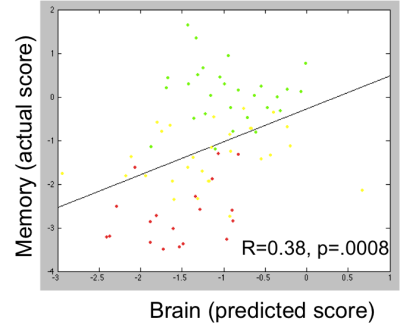 |
Predicting memory impairment using resting-state brain connectomes in older adults
Scott Peltier, Sean Ma, Bruno Giordani, Henry Paulson, Rachael Snyder, Benjamin Hampstead
Resting-state connectome modelling is applied to a population of older adults, including controls, subjects with amnestic MCI, and subjects with AD. Significant prediction of subjects' composite memory scores is achieved.
|
| 13:42 |
0882. 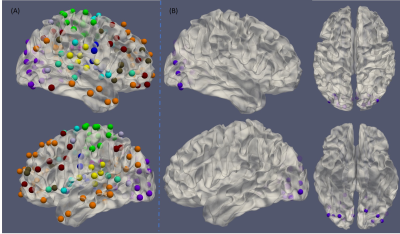 |
Aberrant Temporal Flexibility of Visual Network in Schizophrenia: a Resting State fMRI Study
Kaiming Li, Xiaoping Hu
Schizophrenia has been associated with large-scale hypo-connectivity between brain networks. Since functional connectivity (FC) is dynamic, characterizing the temporal dynamics of FC may provide valuable insights regarding the underlying FC aberrance of patients. We present a framework to investigate the aberrant functional interaction between brain networks in schizophrenia using sliding window correlation and modularity analysis and found aberrant temporal flexibility in ROIs for visual object recognition in patients. Examination of their temporal co-activation profiles revealed higher co-activation of
|
| 13:54 |
0883. 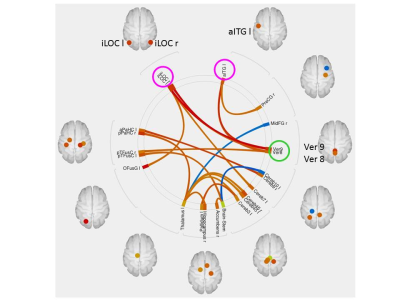 |
Aberrant Resting-state Functional Connectivity of Cerebellar Vermis in Parkinson’s Disease
Li Jiang, Brenda Hanna-Pladdy, Jiachen Zhuo, Paul Fisherman, Rao Gullapalli
Parkinson’s disease (PD) is one of the most common neurodegenerative disorder in the aging population1, characterized by progressive deterioration of motor function as well as non-motor symptoms2,3. To date, most of the resting-state fMRI PD studies focused on basal ganglia3,4,5, whereas few studies on cerebellum5,6, especially cerebellar vermis. In this study, we investigated the rs-FC difference in whole brain in PD patients compared with health controls and the association between FC of vermis and motor and neuropsychological measurements in PDs. Our results suggest that the cerebral vermis, visual cortex, and visual processing associated areas contribute to the development of symptoms in PD.
|
| 14:06 |
0884. 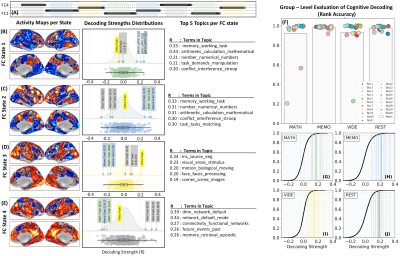 |
Periods of discernible cognition contribute to dynamic functional connectivity during rest
Javier Gonzalez-Castillo, César Caballero-Gaudes, Natasha Topolski, Francisco Pereira, Daniel Handwerker, Peter Bandettini
The etiology of time-varying functional connectivity (dFC) during rest is unclear. Those who hypothesize it to be neuronally relevant explore the phenomena in the context of consciousness, development and psychopathology. Yet, others have raised valid concerns regarding methodology or its significance beyond fluctuations in arousal and sleep. Here, we demonstrate how decodable covert on-going cognition contributes to dFC estimates during awake rest, suggesting that several meaningful FC configurations may be observable during rest. We also demonstrate how FC states—a common model for dFC—robustly capture periods of distinct cognition only when externally imposed, but not during rest.
|
| 14:18 |
0885. 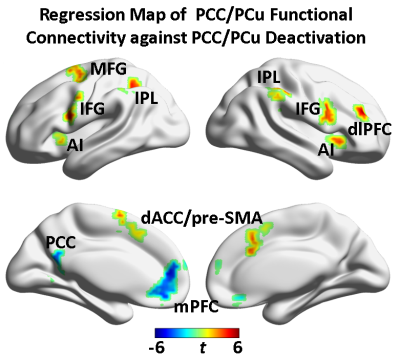 |
Functional Connectivity Mediates the Relationship between Regional Excitation-Inhibition Balance and Default-Mode Network Deactivation
Hong Gu, Yuzheng Hu, Xi Chen, Yong He, Yihong Yang
Aberrant default mode network (DMN) activity has been related to aging and various neuropsychiatric illnesses. To better understand the neural mechanisms underlying the DMN deactivation, we investigated the triple-relationship among the task-induced deactivation, regional excitation-inhibition balance, and the interregional functional connectivity strength associated with the DMN. Using mediation analysis, we found that the network interaction between DMN and the salience network partially mediated the association between the regional excitation-inhibition balance and the DMN deactivation. This finding bridges DMN-deactivation related findings from various neuroimaging modalities and may provide new insights into the neural mechanisms of the DMN deactivation.
|
14:30 |
0886. 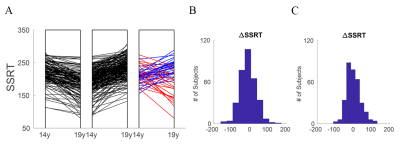 |
Functional connectivity predicts individual longitudinal development in inhibitory control ability: a 5-year follow-up study
Haiyan Wang, Lingzhong Fan, Dongya Wu, Tianzi Jiang
Inhibitory control ability (IC) is related to adolescence impulsive and risky behaviors. It will develop into adulthood, but its trajectory has great individual difference. What brain features affect the individualized development of IC? Here we use longitudinal data and predictive model to predict stop signal reaction time (SSRT) change in 5 years with 14-year-old stop signal task functional connectivity (FC). We find that 14-year-old FCs between ventral attention and subcortical networks can predict the development tendency of IC, even excluding the effect of 14-year-old SSRT. This may help to make early intervention in the development of adolescent IC.
|
| 14:42 |
0887. 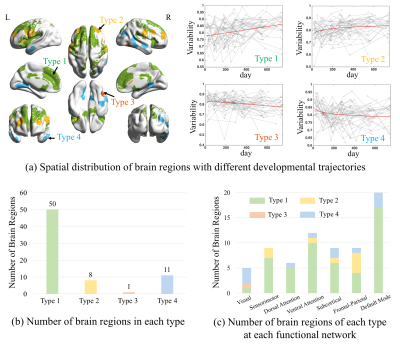 |
Increased Functional Connectivity Flexibility During Early Infancy
Xuyun Wen, Han Zhang, Rifeng Wang, Weili Lin, Dinggang Shen
Understanding the nature of dynamic neural interactions during development is a critical issue of cognitive neuroscience. However, our knowledge
|
| 14:54 |
0888. 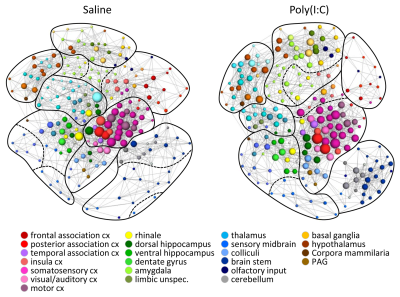 |
Maternal immune activation during pregnancy impacts on resting state functional connectivity in the adult offspring
Silke Kreitz, Alice Zambon, Marianne Ronovsky, Lubos Budinsky, Thomas Helbich, Spyros Sideromenos, Claudiu Ivan, Laura Konerth, Isabel Wank, Angelika Berger, Arnold Pollak, Andreas Hess, Daniela Pollak
The infection of the pregnant female and the ensuing induction of maternal immune activation affect fetal development with long-lasting consequences for health and disease. Specifically aberrant neural wiring may contribute in the manifestation of psychiatric disorders such as depression. Here, we investigated altered resting state functional connectivity using fMRI in adult mice after prenatal immune activation. While the overall flow of information was intact, especially the cortico-limbic connectivity was disrupted in resting state networks of adult offspring. We propose that these altered connectivity patterns may lead to behavioral and emotional abnormalities with relevance for neuropsychiatric disorders.
|
| 15:06 |
0889. 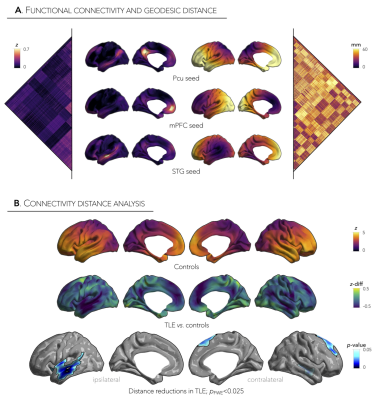 |
Distance-enriched functional connectomics in drug-resistant temporal lobe epilepsy
Sara Larivière, Yifei Weng, Reinder Vos de Wael, Zhengge Wang, Andrea Bernasconi, Neda Bernasconi, Zhiqiang Zhang, Boris Bernhardt
Temporal lobe epilepsy (TLE) is increasingly reconceptualised as a network disorder, with a growing literature suggesting concurrent structural and functional changes in large-scale network organization. In the current work, we developed a novel framework consolidating topological and spatial properties of brain networks and applied it to unveil shifts in the connectional distance distribution in TLE. Patients showed marked connectivity reductions in ipsilateral temporal, insular, and dorsomedial prefrontal networks—regions which coincide with high-degree, transmodal systems. Importantly, distance reductions occurred independently of cortical atrophy but were mediated by microstructural damage, thus emphasizing the clinical importance of physically-grounded measures of functional connectivity.
|
| 15:18 |
0890. 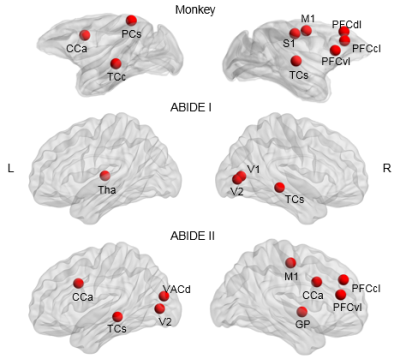 |
A functional connectome-based interspecies model boosts classification in neuropsychiatric disorders
Yafeng Zhan, Jianze Wei, Jian Liang, Ran He, Zheng Wang
Cross-species comparative connectomices based on resting-state functional MRI is a promising method to investigate large-scale brain organization. Here we leveraged a transgenic monkey model overexpressing MECP2 and developed a novel connectome-based interspecies machine learning algorithm for clinical diagnosis of individuals with neuropsychiatric disorders. This fully cross-validated algorithm based on cross-species mapping of regional features significantly boosts the diagnostic performance of ASD and OCD, but not for ADHD, in independent human cohorts, which paves a new avenue to establish a translational path to dissect the neural circuit mechanisms underlying complexity and heterogeneity of human mental disorders.
|
 Back to Program-at-a-Glance |
Back to Program-at-a-Glance |  Back to Top
Back to Top